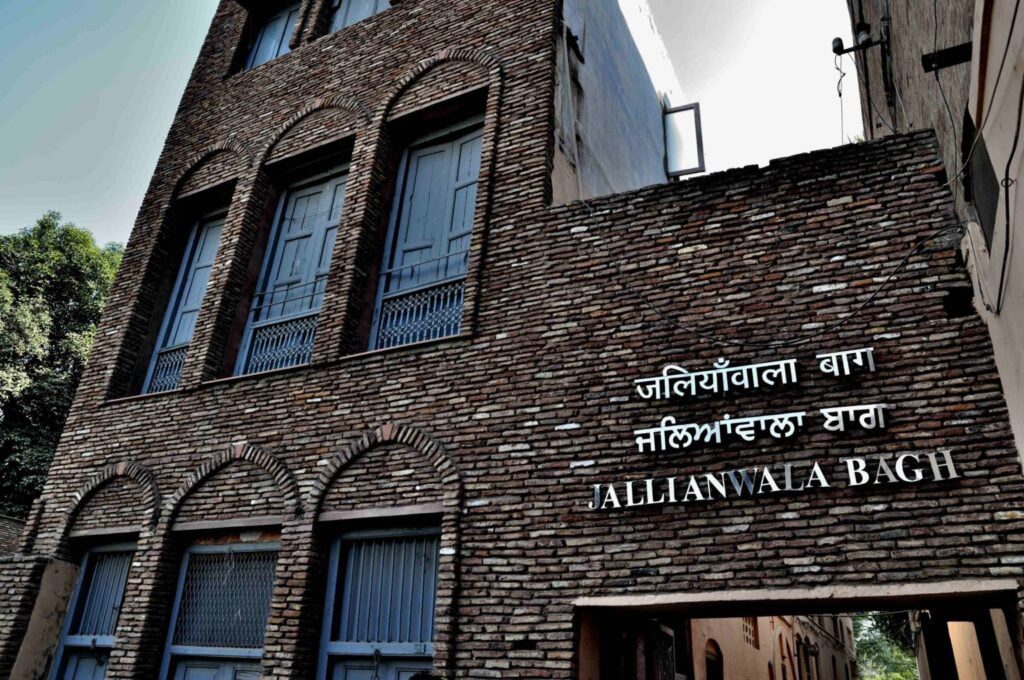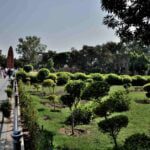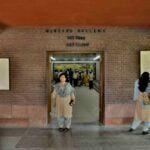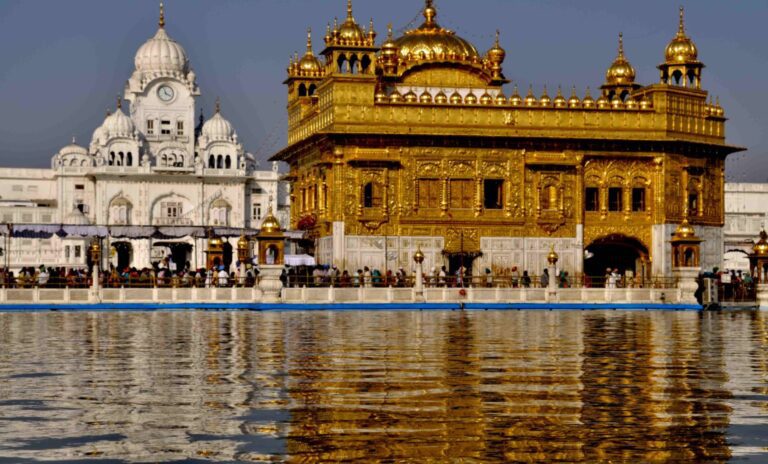The Jallianwala Bagh Massacre, which is another name for the Amritsar Massacre, took place on April 13, 1919. When British troops opened fire on a large group of unarmed Indian protesters at the Jallianwala Bagh in Amritsar, Punjab province, hundreds of people died and many more were badly hurt. The killing took place in a 6.5-acre (26,000-square-meter) garden close to the greatest temple in Sikhism, the Golden Temple complex.
Jallianwala Bagh Massacre
The Jallianwala Bagh is a park in Amritsar, which is in the state of Punjab in India. In 1951, to remember the killing, the Indian government built a national memorial there. During World War I, the British government in India passed the Rowlatt Acts in 1919 to give it more power to stop actions that were against the government.
On April 13, a lot of people showed up at Jallianwala Bagh to protest the actions. When the British cops started shooting, 379 people were killed and more than 1,200 were injured. The tragedy changed India’s relationship with Britain forever and gave Mahatma Gandhi the idea for his “non-cooperation” movement in 1920 and 1922.
It was a turning point in modern Indian history because it changed India’s relationship with Britain forever and showed that Mahatma Gandhi was fully committed to Indian nationalism and freedom from Britain. From 1914 to 1918, when World War I was going on, the British government in India used a number of harsh emergency powers to stop rebels from taking over.
Amritsar Massacre
By the end of the war, the people of India were very hopeful that these restrictions would be lifted and that India would get more political freedom. In fact, the Montagu-Chelmsford Report, which was given to the British Parliament in 1918, said that cities and towns should not have too much power. Instead, at the beginning of 1919, the British Indian government passed the “Rowlatt Act,” which basically just kept the strict rules from the war.
Especially in the Punjab area, people were angry and upset about what had happened. Gandhi asked everyone in the country to stop working for one day at the beginning of April. Top Indian leaders had been arrested and kicked out of Amritsar, which led to violent riots on April 10. Soldiers shot at citizens, buildings were looted and burned down, and angry crowds killed several foreigners and beat a Christian missionary very badly.
Brig. Gen. Reginald Edward Harry Dyer was in charge of a small group of troops who had to put things back in order. One of the rules said that people couldn’t get together in public. At least 10,000 men, women, and children got together at Jallianwala Bagh on April 13. High walls circled the area, and there was only one narrow way in or out. It’s not clear how many protesters broke the rule against public gatherings or how many people came from other places to celebrate Baisakhi, a spring holiday.
Jallianwala Bagh Garden
Dyer and his men stopped everyone from leaving when they got there. Reports say that the troops shot at the group without notice and fired hundreds of rounds until they ran out of ammunition. No one knows for sure how many people died and were hurt in the massacre, but one government source says 379 people died and another 1,200 were hurt. Dr. Smith, who was in charge of public health, said that 1,526 people had died.
The stated number of deaths is 379, but a lot more people probably died than that. As soon as the guards stopped shooting, they ran away, leaving the dead and injured behind. After the shooting, the Punjab was put under martial law. People were made to feel bad by public floggings and other things. As word spread across the subcontinent about the shooting and what the British did next, Indian anger grew.
Jallianwala Bagh Gallery
The British government gave Rabindranath Tagore a “knighthood” in 1915, but he turned it down. Tagore was a poet, writer, playwright, musician, philosopher, social reformer, painter, and winner of the Nobel Prize in literature in 1913. Gandhi was slow to act at first, but his first large-scale, long-lasting peaceful protest, called “satyagraha,” the non-cooperation movement of 1920–1922, made him a leader in the fight for Indian freedom.
The British Indian Government’s Hunter Commission looked into what happened. People didn’t like what Dyer did, so in 1920 he had to leave the service. People in the United Kingdom had different reactions to what happened. In 1920, Sir Winston Churchill, who was Secretary of State for War at the time, criticized Dyer’s acts in a speech to the House of Commons.
But the House of Lords said nice things about him and gave him a sword that said “Savior of the Punjab” on it. People who liked Dyer also helped him get a lot of money from other people. At the Jallianwala Bagh spot in Amritsar, there is now a national monument. The official numbers of 15,000–20,000 people at the rally, the number of shots fired, and the length of the shooting were clearly wrong, so the Indian National Congress started its own probe.
It came to very different conclusions than the British government’s “investigation.” The Congress said that more than 1,500 people were hurt, and almost 1,000 of them died. The British government tried to hide what happened, but people in India found out, which made them very angry. The killing wasn’t known about in Britain until December 1919.





The Jallianwala Bagh massacre of 13 April 1919 . In Jallianwala Bagh, Amritsar, Punjab, Baishakhi pilgrims were fired upon by troops of the British Indian Army under the command of Colonel Reginald Dyer